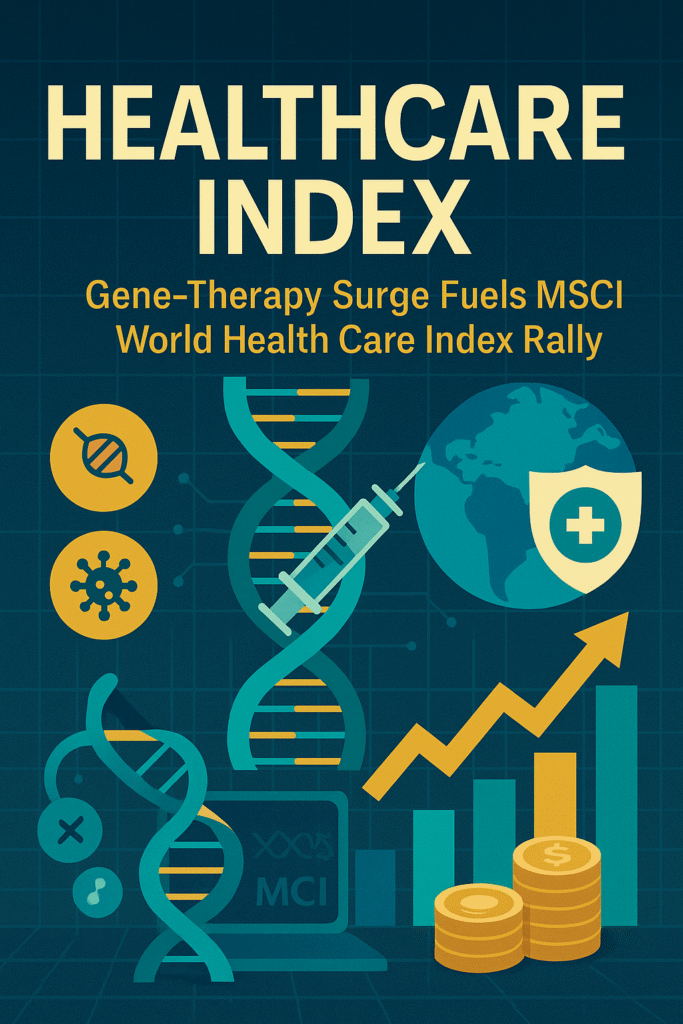While gene-therapy approvals advance, the MSCI World Health Care Index is rallying. Therefore, investors are reassessing healthcare index performance and long-term growth prospects in the sector.
1. Gene-Therapy Approvals Drive Sector Optimism
First, breakthrough FDA and EMA approvals for next-generation gene therapies have ignited enthusiasm. In recent months, regulators green-lit novel treatments for rare genetic disorders. Thus, they validated years of R&D investment. Consequently, biotechnology and specialty-pharma stocks—already key constituents of the healthcare index—have outperformed broader markets. This reflects the commercial promise of personalized medicine.

2. Composition & Weight Impact on the healthcare index
Moreover, the MSCI World Health Care Index has a heavy tilt toward biotech with approximately 30% weight. In addition, large-cap pharmaceuticals have a 25% weight, which magnifies the effect of gene-therapy news. Companies like CRISPR Therapeutics and Bluebird Bio—though each under 1% weight—have seen share prices jump 15–25% on approval announcements. Hence, even modest gains in mid-caps can translate into a 0.5% move for the overall healthcare index. This underlines the index’s sensitivity to innovation catalysts.
3. Valuation & Earnings Revision Dynamics
Meanwhile, analysts have revised 2025 earnings estimates for life-science firms upward by an average of 8%. This increase is driven largely by anticipated gene-therapy revenues. As a result, the healthcare index’s forward P/E multiple has expanded from 18x to nearly 20x. Therefore, valuation metrics are stretched above its five-year average of 17x. Nevertheless, many investors view this premium as justified by durable, high-margin growth streams.
4. Investor Flows & Allocation Shifts
In response, both active and passive funds have rotated into the healthcare index. Over the past four weeks, global healthcare ETFs recorded net inflows of $4.2 billion. Meanwhile, technology-sector trackers saw only $1.8 billion. Accordingly, portfolio managers are pivoting toward healthcare to balance tech-heavy equity allocations. They seek defensive ballast and secular growth exposure simultaneously.
5. Risks & Regulatory Hurdles
However, gene therapies face persistent headwinds because manufacturers must navigate pricing debates, payer reimbursement delays, and complex supply-chain logistics for one-time treatments that can cost over $1 million per patient. Furthermore, ongoing patent litigation and safety-monitoring requirements could introduce volatility. This reminds investors that healthcare index gains remain tethered to regulatory execution.
6. Looking Ahead: Long-Term Growth Outlook
Ultimately, as gene-therapy pipelines mature and delivery platforms improve, healthcare index constituents stand to benefit from recurring revenue in adjunct biologics and next-generation sequencers. Consequently, investors should track upcoming FDA advisory-committee meetings and Phase III trial readouts for clues on the healthcare index’s next inflection point.